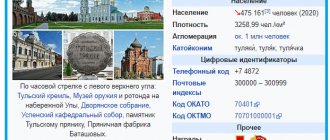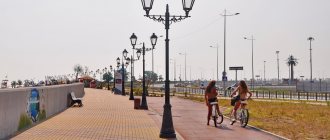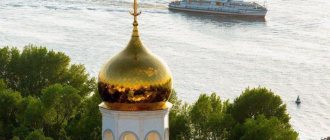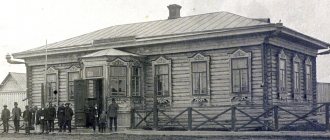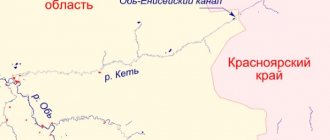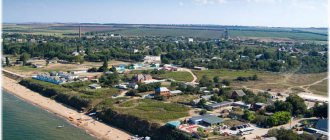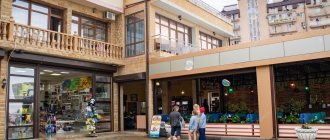The district includes a city and 17 village councils. The administrative center is the city of Pestovo , which is located at a distance of 314 km from the regional center (Veliky Novgorod).
Transport communication with the regional center is carried out in two ways:
- by railway Pestovo - Nebolochi - Okulovka - Veliky Novgorod;
- along the highway Pestovo - Borovichi - V. Novgorod.
In addition, the area is crossed by:
- railway, Moscow - St. Petersburg, 75 km long, in the Pestovsky district;
— the Valdai – Vologda highway, the section of which in the region is 70 km..
The length of asphalt roads is 251 km. The population of the district is 23,462 people, including 15,848 people in the city and 7,614 in the countryside.
History of the city of Pestovo.
Each city has its own unique appearance. The city of Pestovo is the embodiment of the beauty and spaciousness that is inherent in the Russian outback, it also clearly demonstrates the originality of the Russian character... This is all - the unique appearance of the Pestovo region, which at one time was often jokingly called the “bear corner”. But it is not so. Is it just that the name of the city of Pestovo, according to one version, comes from a peston bear that lived in these places more than half a century ago. Here is another assumption: the residents of the village of Russkoe Pestovo, at one time, were engaged in woodworking: they made pestles for mortars, which, in fact, became famous in the area. The name of the village allegedly comes from the word “pest”. The third version boils down to the fact that the first inhabitants of these places were the Pestov brothers.
Pestovo is one of the youngest cities in the Novgorod region , however, the history of the settlements that arose in these places has its roots in the distant past. There are at least 64 archaeological monuments (mounds, hills, zhalniki, settlements, settlements), which indicate
sustainable life more than a thousand years ago.
Unique ancient monuments in the vicinity of such villages as Klimovshchina, Ustye, Novinka are witnesses of the past centuries. The cluster of mounds near the village of Klimovshchina dates back to the 6th century. This category of monuments is one of the largest in the Novgorod region and indicates that the first peoples to settle the Pestov lands were Finno-Ugric tribes, whose main activities were hunting and fishing. Following them came the Krivichi, and a little later the Novgorod Slovenes, attracted by the rich pine forests.
Mention of the Mologa River, on the banks of which the first settlements arose, dates back to the 7th century, when the Grand Duke of Kiev Izyaslav Mstislavovich fought with Yuri Dolgoruky, Prince of Suzdal and Rostov.
The name of the settlement of Pestovo dates back to 1495 - a mention in the scribe book “Bezhetskaya Pyatina in the Bogoroditsky Pogost in Voldomitsky in Ormu to be proud.”
In 1912, by decree of the tsarist government, it was decided to build a railway connecting St. Petersburg and Moscow.
In 1919, the Pestovo ... In the same year, the first trains passed through the Volkhov-Rybinsk railway station.
In 1923, an agreement was concluded with German concessionaires on the construction of a plant at Pestovo station.
On December 6, 1924, the plant was launched. Its construction can be considered the beginning of the emergence of the village of Pestovo.
In 1927, a new administrative division took place in Russia, and the workers' village of Pestovo became the regional center of the Leningrad region.
In 1944, with the formation of the Novgorod region, the district transferred to this region.
On January 12, 1965, by Decree of the Presidium of the Supreme Soviet of the RSFSR, the village of Pestovo became a city of regional subordination.
In the Pestovsky district there are 54 monuments of urban planning and architecture, 9 historical monuments, 58 archaeological monuments.
— Church of the Holy Trinity (1814, Okhona village). Known as the earliest monument of stone architecture of the classicism period.
— Church of the Intercession of the Blessed Virgin Mary (mid-19th century, town of Pestovo).
— Church of the Presentation of the Blessed Virgin Mary into the Temple (19th century, Vyatka village).
— Church of the Nativity of the Virgin Mary (1856, Kirva village).
Historical monuments include one of the 4 lifetime busts of V.I. Lenin (1920), installed in the LK park.
Four holy springs are famous for their clean and healing water, although there are many more of them. One of them is near the village of Abrosovo, the other is between the villages of Uloma and Plavi. 1.5 km. From the village of Novoselki a third spring gushes out of the ground. The fourth - near the village. Ohona.
At all times, holy springs have been places of worship and Orthodox cult ceremonies.
The discreet, discreet beauty of these places is unique. It was here, in the Russian outback, that world-famous writers and artists drew inspiration.
On the outskirts of the village of Eremino, in a pine forest, on the high bank of the Meglinka River, there is a one-story building of the former zemstvo hospital. In the fall of 1893, the famous Russian writer G.I. visited here. Uspensky. In one of his stories, he describes the wonderful Ereminsky forest.
In the vicinity of the village of Laptevo from 1910 to 1914 M.M. lived and worked. Prishvin. A passionate hunter, lover and connoisseur of nature, he drew inspiration from these untouched places, finding new themes for his stories. He sang the beauty of the Pestovsky region in the book “In the Land of Unfrightened Birds.”
In 1933 - 1934, V.V. visited the Novgorod region for the first time. Bianchi. He came to Pestovskaya land three times and observed nature.
The Ustyuzhensky district and the Okhon hospital are mentioned in the essays of N.S. Leskov "Trifles of Bishop's Life".
Exquisite folklorist, ethnographer P.I. In 1860, Yakushkin traveled along the postal route, stopping in villages and hamlets, where he described the life and everyday life of the peasants of our region.
A.I. Kuprin hunted in these places more than once.
The famous Russian artist I. Shishkin noted in his travel diaries the virgin nature of the Pestovsky region, having visited our places.
Near the village Ohona, G. Ulanova’s parents rented a dacha, where the famous ballerina herself came twice.
Relief, geological structure and minerals.
The relief of the Pestovsky district has a gently undulating structure. The predominant heights are 100-200 meters above sea level. The last Valdai glaciation played the greatest role in the formation of the relief. No large mineral deposits have been discovered. There are deposits of peat, sand, and clay. There are about 40 peat deposits in the region with a total area of 8026 hectares.
Climate of the Pestovsky district.
Moderate continental, close to maritime. Winter is moderately cold, summer is moderately warm. The average temperature of the warmest month (July) is +16.8 C. The coldest month is January. Average temperature -10.3 C. Average annual precipitation 648 mm..
Vegetation and fauna.
The nature of the Pestovsky region is exceptional and diverse. For lovers of fishing and hunting, this is truly a fabulous land. The main wealth of the area is its forests. Spruce and pine predominate with an admixture of small-leaved species - aspen, birch, alder. The undergrowth contains rowan, willow, and juniper. The forests contain an abundance of cranberries, strawberries, lingonberries, blueberries, cloudberries, blueberries, and a lot of mushrooms. Brown bears, lynxes, wolves, hares, foxes, weasels, wild boars, and moose are found in the forests. Small rivers and quiet creeks are favored by beavers and muskrats. Among the birds, the most common are crossbill, wood grouse, great feathered woodpecker, nuthatch, tit, black grouse, partridge, ducks of various species, hazel grouse, woodcock, chaffinch, owl, eagle owl. Among the raptors there is the goshawk. In rivers and lakes there are: pike, bream, vendace, perch, roach, ruff, pike perch, carp. The smelt comes to spawn.
Land resources.
The land resources of the district are 211,000 hectares, of which farmland is 18%, forests are 71%.
The village of Pestovo during the war years
During the war, Pestovo and the surrounding areas were included in the front line. Streams of refugees from the western regions of the country are moving through the village. A small village on the banks of the Mologa sheltered 20 thousand children of hungry Leningrad. The evacuees were housed in schools and other educational institutions. Those able to work worked at the enterprises of the region. In the first days of hostilities, hundreds of Pestov residents went to the front. Young people of pre-conscription age and the elderly were also not left out. They organized battalions whose task was to fight saboteurs and sabotage groups. In 1941, several garment factories from Leningrad were moved to the territory of the village. Having settled in a new location, they produced products so necessary for the front.
Village of millionaires. How the village of Pestovo became the capital of the national trailer industry
Author: Elena Yarovikova
13.28, 13.29, 13.30... The high-speed Sapsan train departs from the Leningradsky railway station in Moscow. In business class there are clean-shaven men with expensive laptops and women with perfect haircuts. They look at passengers who get off at the intermediate Okulovka, before reaching from one capital to another, with barely noticeable sympathy. The air here is filled with completely different smells - rougher and simpler. An assignment to write a story about a village of dollar millionaires located somewhere in this area seems like an editor's prank gone wrong.
— To Pestovo?
Yes, they only have Hummers and Mercedes driving on the roads there! Even dogs are housed in special VIP kennels: two rooms, a corridor, double-glazed windows - I saw it myself! — At the counter in the station shop they tell stories about the neighboring village in epic style. True, unlike the similar epic about Rublyovka near Moscow, the legends about Pestovo do not give rise to any social protest even in the souls of the storytellers. Maybe because they have the same ending: Alexey Mayshev for “RR”
- But the guys work hard there, be healthy! They beat up their huts from morning to evening. When they sleep, when they eat, it’s generally unclear.
Change houses are the same temporary trailer houses in which workers live at any construction site in any city in Russia. And almost everything is from here, from Pestov.
— The muzzles are fat, healthy, cheerful! — The visitor to the station store still can’t calm down about the dog’s happiness. And all the way to Pestov, the cheerful fat faces of Pestov’s dogs stand before my eyes.
Jerk Cousin
If you want to understand the phenomenon of a local economic miracle, the first thing you need to do is find businessman Oleg Kuzin - he started a private business in change houses.
“Yes, it all started with me,” nods businessman Kuzin.
A thin twenty-year-old boy, Oleg instinctively sensed a gold mine, took a hammer, nails, boards and began to “pound the cabins” by hand. These two words have since become synonymous with the word “success” here.
This is how a construction shed is made. Simple, but very profitable Alexey Mayshev for RR
“Killing change houses” means working hard, earning a lot and generally getting everything out of life. Kuzin still makes and sells them, only the scale and geography of sales have increased significantly. Now he is a real dollar millionaire, tycoon and owner of his empire - the group.
…It’s already evening, about eight. Usually at such a time the province is dying out, but here the work is in full swing: workers are swarming in the workshops, the janitor is sweeping the territory, and Kuzin does not even think about leaving his workplace. We are sitting in his spacious director’s office, and I’m trying to understand how it happened that in the midst of Velikonovgorod’s hopelessness, a whole archipelago of economic growth and prosperity arose on its own, without any state tutelage.
“In Soviet times, there were two city-forming enterprises in Pestov - a timber processing plant and an experimental mechanical plant,” Kuzin begins from afar. — The lumber mill produced lumber, and at the same time a by-product - wooden cabins, the so-called forester's house. And OMZ made metal sheds for builders, also known as block containers. It was a powerful production, the products were sold to Algeria, Guinea-Bissau, Mongolia, Iraq, and Cuba. There was a lot of money, and they didn’t skimp on technology—the cabins were equipped with everything, right down to beds and refrigerators.
And then came perestroika. Large enterprises began to crack and quickly fell into disrepair.
“I myself worked at a timber mill: first I sorted lumber in the forestry department, then I was a driver,” continues Kuzin. — But in 1992, wages were delayed for three to four months. I had only been married a year, my son had already been born, but I had no money. In general, I took a sip of grief to the fullest. Here they began to promote small businesses on TV, shuttle traders began to travel to Moscow and St. Petersburg to buy goods, and the first private shops opened. My wife and I went to work at a bottle collection point for a local businessman. And then we thought: why are we any worse?! And together with a friend, I opened the first food stall. Then the second, third. The first money arrived, turnover. But the ceiling for this business is low, there is simply nowhere to invest new money in it: the village is small, people’s purchasing power is low, and the assortment is meager. Where to invest?
The answer came naturally. The lumber mill and OMZ were already dying, but out of habit, Moscow buyers and suppliers continued to travel to Pestovo.
“They were looking for cabins at lower prices than state-owned enterprises could offer, and therefore they left with nothing,” recalls the founding father of a local business. “I thought and thought and bought a small area on Schmidt Street, about twenty hundred square meters. I hired two assistants, and we began to knock out the first change houses - the simplest ones, without any bells and whistles. We have simplified the technology and made it cheaper. It’s easier for private owners than for large factories: move here, make a discount there. I put together about twenty or thirty cabins with my own hands, and then I saw that things were going well, I hired workers, I began to deal with supplies and sales...
In 1993, no clairvoyant could have predicted that the collapsed country would begin to slowly be built, and then there would be a construction boom and inexpensive wooden construction cabins would become an urgent need.
“Nobody expected that there would be such a rush of demand,” says Kuzin. — The goods were gone. The men look: yeah, things are looking up for Cousin. Yeah, Oleg bought a car, a brand new 99. Then Mitsubishi Lancer. Then I saw that one of my acquaintances had started banging on the sheds after me, a second one joined in, a third. The workers who worked for me started their own business. Fan. And so it went.
The nineties were a difficult time for Russian business, but by some miracle Pestov’s businessmen got out of trouble and even turned their problems into new opportunities.
“On Black Tuesday in 1998, I was just lucky, like Prokhorov in 2008,” Kuzin laughs. “It was at that moment that a Moscow organization bought a large batch of block containers from me, and I was able to sit out the crisis. But others somehow survived; only two or three people were wiped out of Pestov’s business. Then we clearly realized that we needed to expand our business and make it more diversified. The change houses will not work - shops, construction crews, and an entertainment center will bring profit. You can't put all your eggs in one basket.
Victory Day
The story of the rapid and resounding success of Pestov’s business unfolded before everyone’s eyes. Life was in full swing; trucks loaded with household goods were rushing along the roads. Some - towards Moscow, others - towards St. Petersburg.
“Pestovo is located halfway between the two capitals, 470 kilometers to Moscow, 480 to St. Petersburg,” says another Pestovo heavyweight, director Oleg Sterkhov. — In the late 90s, we paved the way to construction sites in Moscow and the region. In the early 2000s, St. Petersburg woke up, trucks went to the northwest. Dozens of Pestov residents became representatives of companies in both capitals. And in the mid-2000s, one after another, we opened our websites on the Internet - and the flow of buyers from all over the country went off scale.
In this unique situation, when the whole city, in fact, is engaged in the same business, making the same product, surprisingly, a competitive war did not break out.
- No, what competition! - Kuzin objects in bewilderment. — There is enough work for everyone. This market simply cannot be conquered alone. Moreover, when you have a lull, and your competitor has a flood of orders, he says: “Oleg, help!” - "Yes please!" And vice versa. We all grew up here, we’ve known each other like crazy since kindergarten.
“They don’t interfere with each other, and this is easily explained,” says Yuri Egorov, head of the intermunicipal department of the Ministry of Internal Affairs of the Russian Federation “Pestovsky”. — If sales were only in Pestov, competition would arise. But they have nothing to divide, the country is huge. They all have websites on the Internet, some sell to Chita, some to Samara, some to Ukraine, and some to Spain. On the contrary, they unite so as not to miss orders. During the entire time that I have been working here, there have never been any misunderstandings between entrepreneurs. When people are rich, why should they be nervous?
Now Pestov’s cabins are located in the tundra, in the taiga, and in the sea, on oil platforms. So gradually the Pestovites captured the entire territory of the country, right up to the Far North.
“From Pestov they are sent first to Arkhangelsk by rail, then by boat to Igarka, then by plane to the oil workers’ village,” Oleg Sterkhov outlines transport logistics. — Transportation costs reach up to a million rubles, and the block containers themselves cost 140 thousand. But the oil workers still order: one block container is not only housing, but also a ready-equipped bathhouse, go in and wash, we even put firewood there as a bonus, because you won’t find firewood in the tundra. And one of our entrepreneurs, in order to optimize delivery costs, recently built an assembly shop in Vladivostok: it is more convenient for him to deliver components by rail, assemble modular containers on site and transport them from there throughout the Far East. Many orders are taken to Sochi for Olympic venues, and to Chechnya... but it’s easier to say where they are not taken.
— Do you remember the moment when you realized: this is a victory? — I ask Oleg Kuzin.
- A! Of course I remember,” he smiles. — When there was a flood of orders from the Internet, such a feeling of satisfaction came: well, that’s it, life is good. It was as if the war had really ended.
Money smells
When money poured into the city, life began to change before our eyes. And the abyss separating Pestovo from neighboring towns is becoming deeper and deeper over the years.
Entrepreneur from Pestov, millionaire Oleg Sterkhov, in the Novgorod beauty salon Alexey Mayshev for RR
In some indicators of the standard of living, the village has already surpassed... Moscow. For example, the number of cars per capita is almost double: in the capital there are two cars for every five people, in Pestov there are three for four people. And mostly foreign cars. When the Pestovskys come to car dealerships in Novgorod, Tver or Borovichi, the local salespeople have intensified doubts about the prospects of their own profession. “What kind of Klondike do you have in Pestov?” - “Yes, so, we knock with hammers little by little.”
“Before, in the 80s, people walked down the street in sweatshirts and slippers, but now it’s customary to dress in the capital’s boutiques,” the Pestovites don’t lie or blush. — Our children study in Moscow and St. Petersburg, we buy apartments there, but for now we prefer to live and work here, in our homeland. There are only grocery supermarkets in Pestov: two “Pyaterochka”, three “Magnit”, two “Dixie”. And there are fifteen construction stores.
Another indicator by which the village competes with the largest cities in the country is the number of businessmen. According to the economic department of the administration of the Pestovsky municipal district, 938 entrepreneurs are registered in the village. Plus about two thousand people are engaged in off-site construction. And this is for 16,000 inhabitants.
— If you make a local Forbes list, how many people will be on it?
“At least ten, maximum fifty,” Oleg Sterkhov answers confidently. — Of course, dollar millionaires, not ruble ones. Our ruble millionaires are ordinary builders who work on the road. The season has battered the cabins, bathhouses, and dachas - now he’s already driving a new million-dollar car. A welder working on block containers earns two to three thousand rubles a day. A driver costs three to four thousand for one flight to Moscow. There is work, a lot of it. A friend from Arkhangelsk came to visit, looked and smelled: “Your air even smells of money!” But there are no longer enough people, at least local ones.
…Morning. The streets and courtyards are filled with sun. Trying to comprehend the numbers given to me the day before, I methodically drive around Pestovo, street by street. What is so special about this place that turns ordinary people into successful millionaire businessmen? In another place and under other circumstances, they would have happily drunk themselves to death, but here they are thriving.
Outwardly, this provincial town is almost no different from hundreds of provincial Russian towns and villages - the same wooden huts, the same gray streets without sidewalks, terrible broken roads full of potholes, rare passers-by and fresh tasty air.
Well, yes, a lot of cars. Well, yes, there are a lot of new houses, big and strong. There is even its own Rublevka with brick mansions and tall fences - the village of Popovo. But in essence, Pestovo remained just a strong, prosperous village. Well, maybe very, very wealthy.
“Pestovo became a city only in the mid-60s of the last century,” Oleg Sterkhov, the 54-year-old head of Pestovoexportles, explains to me. - Because - you see the difference - there are very smooth wide streets and large plots of land, because until 1965 in rural areas they allocated 20 acres per house. And as soon as they received city status, they began to give no more than six hundred square meters. Imagine, Pestov’s area is 50 square kilometers. That's a lot! For comparison: the area of Moscow within the Moscow Ring Road is one thousand square kilometers.
Conscience as an investment
Oleg Sterkhov is Pestov’s very first private entrepreneur. When Oleg Kuzin was still working at the plant, Sterkhov was already trading with might and main on the Leningrad St. Petersburg Commodity and Stock Exchange. The birthday of his business is December 3, 1990. Now, 22 years later, half of St. Petersburg construction stores sell Sterkhov building materials. In Spain, in Andalusia, in the town of Ubeda, there is a village built by Sterkhov of 27 frame-panel two-story houses. He knows all the ins and outs of Pestov’s business. Therefore, it is to him that I address the most painful question for entrepreneurs in Russia. And I get an unexpected answer.
“You know, we have no corruption,” says Oleg Sterkhov.
“Well, yes, of course,” I play along.
- Yes, I'm serious! You may not believe it, but our laws really work. And why? But because when people work, then the laws work. And when people do nothing, when they don’t have any real interests, they don’t defend them—that’s when chaos begins. And from whom should we take bribes, from whom should we extort money? All yours. You stole - in an hour the whole city knows. In court, one chairman tried to introduce the custom of taking money from businessmen - he had to leave the city. And since they don’t take it in court, and in the prosecutor’s office, young guys don’t press on the business.
- Well, the traffic cops don’t take them either?
“They definitely don’t take it from the locals,” adds another giant, the 60-year-old owner of the Kamstroy enterprise, Alexey Kolosov. - If they take it, then maybe it will be from someone from out of town - you can’t explain to the authorities that you also need money for gasoline. But when the locals are stopped, they don’t even stutter - we know them all like crazy.
So, maybe the whole secret of the success of Pestov’s business is precisely this - everyone knows each other, and no one bothers anyone? When they started their business, the state simply had no time for them. And then “the train left”: the local bourgeoisie had already grown stronger, and conscience in a small town is still a real economic factor, not like in a big one.
Now the main concern of Pestov’s entrepreneurs is that the city does not grow. Otherwise, all the advantages of a small town, but essentially a large village, will be lost. As soon as people stop knowing each other like crazy, the main ingredient of Pestov’s success will disappear - ordinary boyish decency.
Inventors of the bicycle
So far business is booming. Most Pestov entrepreneurs have reached the pre-crisis level of 2008. This means that things are going well in the Russian construction business, and consequently in the entire economy. Because Pestovo is the best barometer. There is a flood of orders - there is development in the country, but there are no orders - beware of investing money in long-term projects.
But not all the leaders of the Pestov economy are confident that their reign in the market of change houses will be eternal.
“I think that soon we will not be able to withstand the competition,” says construction manager Sergei Trushkov. — We are too far from Moscow and St. Petersburg, the road eats up a lot of expenses. If somewhere closer to Moscow, for example, a company appears that will make high-quality cabins, it will certainly be in a more advantageous position. But for some reason no one has tried it yet.
Seeing the general prosperity in Pestov, the neighbors started a profitable business. But it didn’t work out: some lacked experience, some lacked quality, some were ruined by greed.
“After us, they tried to start producing block containers in Rybinsk, but it didn’t work out for them,” says Kuzin. — The Vologda company started a business, but charged such unaffordable prices that it did not last long: if our block containers with clapboard and MDF trim cost from 44 to 55 thousand rubles, then their prices were under 100 thousand. Who needs to pay twice as much?
They wanted to compete with the Pestovites in neighboring Borovichi, but things didn’t work out either.
“And the whole point is that Pestov’s entrepreneurs have reduced prices to the limit,” says Pestov’s businessman Alexey Kolosov. — Now the maximum profit from each block container is 1,500 rubles. Only large orders are truly profitable. And who will give them to you if you are just entering this business? They appear when you have already earned a name for yourself... We are like that bicycle that managed to accelerate in time. The car, of course, goes faster, but it still needs to be built.
Farewell, Soviet man
The owner of Kamstroy, Alexey Kolosov, in terms of business, has long grown to a national scale, but at the same time remains one hundred percent local. He started with change houses, and over time moved on to the construction of eight- and sixteen-apartment buildings using his own know-how. His wife Ekaterina is the director of two stores with mutually exclusive specializations: wine and vodka and sports.
Previously, my husband was a mechanic at an agricultural enterprise, a chief engineer at a collective farm, and worked for three years at a gas pumping station—where the party sent him, he plowed there. And my wife headed the statistics department for 22 years.
Based on their fate, one can trace the notorious transformation of consciousness from the Soviet to the “Pestov” person. The couple gives me tea and thinks aloud about life.
“When, due to a conflict with my boss, I had to resign from the administration two years before retirement, it was a disaster for me,” recalls Ekaterina, and, despite the statute of limitations, her eyes become moist. — It’s good that Lesha was involved in business. He immediately gave me two of his stores and said: “Here, take care of them completely.” So now I am an entrepreneur myself. And the entire population has rebuilt, everyone has gone into private business. And you know, life has become better, there is more stability.
Everyday life of a millionaire. Tycoon Oleg Kuzin changes tires on his car Alexey Mayshev for RR
— What about the Soviet “confidence in the future”?
- What confidence there is! Do you know how it was? Previously, we both had positions - we were responsible for everything, but we received crumbs. The husband received a director’s salary of 200 rubles, and his workers received 600 rubles each. They had no right to work part-time. And I still have 140 rubles. It wasn’t because we had a good life that we went for cranberries every holiday - we handed over two or three tons per season with the children. So we bought a wall and our first car, a three-ruble ruble. Now there is also a lot of fuss, but everything is somehow more logical and calmer.
Life has changed dramatically, there is more money. But the residents of Pestov never learned to throw them to the wind on a merchant scale - neither luxurious weddings, nor magnificent anniversaries with the invitation of world stars were thrown in Pestov. The people here are generally tight-fisted. The only thing in which the Pestovskys give themselves free rein and brag uncontrollably to each other is fireworks.
- Oh, what’s happening on New Year’s Eve - a glow over the village, like during the day! — Ekaterina Kolosova smiles. — One speaks in front of the other. Last year I sold fireworks at my place - the most popular ones were 150 charges. The sky is already on fire!
And so Pestov’s businessmen invest all their earnings in business. Well, maybe even traveling.
— Have you been on vacation for a long time?
“Yes, we try to get away to rest for at least a couple of weeks,” the couple smiles. — We were in Egypt, Bali, Thailand. Today we are going to Vietnam.
“But, to be honest, I don’t like it there,” admits Alexey Kolosov. “And I don’t like their food.” Do I know how I eat? I’m bringing smoked sausage, herring, vodka, and dry drinks for the girls. And I miss home. I would go to Europe. Or to Baikal, to Solovki. Better yet, lie down at home, turn off your phones and get some sleep...
Map
| Pestovo: maps |
Pestovo: photo from space (Google Maps) Pestovo: photo from space (Microsoft Virtual Earth)
| Pestovo. Nearest cities. Distances in km. on the map (in brackets along roads) + direction. Using the hyperlink in the distance , you can get the route (information courtesy of the AutoTransInfo website) | |||
| 1 | Sandovo (Tver region) | 37 (96) | SE |
| 2 | Lesnoye (Tver region) | 39 (52) | SW |
| 3 | Ustyuzhna | 44 (52) | NE |
| 4 | Chagoda (Vologda region) | 69 (173) | NW |
| 5 | Moshenskoye | 72 (96) | Z |
| 6 | Molokovo (Tver region) | 73 (139) | SE |
| 7 | Coniferous | 81 (101) | NW |
| 8 | Vesyegonsk | 84 (110) | IN |
| 9 | Babaevo | 87 (143) | WITH |
| 10 | Maksatikha (Tver region) | 89 (132) | YU |
| 11 | Udomlya | 92 (275) | SW |
| 12 | Red Hill | 96 (164) | SE |
| 13 | Kaduy (Vologda region) | 100 (190) | NE |
| 14 | Bezhetsk | 104 (184) | SE |
| 15 | Borovichi | 113 (129) | Z |
| 16 | Courts (Vologda region) | 117 (183) | NE |
| 17 | Sonkovo (Tver region) | 120 (217) | SE |
a brief description of
Located on the Mologo-Sheksninskaya lowland, on the river. Mologa (Volga basin), 314 km east of Veliky Novgorod.
Railway station.
Territory (sq. km): 15
Information about the city of Pestovo on the Russian Wikipedia site
Historical sketch
Founded in 1918 as a railway. Pestovo station during the construction of the Oktyabrskaya Railway; name after the village of Pestovo. Oikonym from the Russian nickname Pest, often found in Novgorod acts of the 15th-16th centuries.
The first train passed through Pestovo in 1919. In 1924, a sawmill opened in the village near the station.
Since September 19, 1927, the working village of Pestovo. Since 1965 the city of Pestovo.
Economy
JSC "Pestovsky Mechanical Plant".
In the Pestovsky district, grain crops, fiber flax, potatoes, and perennial grasses are grown. They raise cattle and pigs.
Main enterprises
BUILDING MATERIALS INDUSTRY
OJSC "Pestovsky Experimental Mechanical Plant"
174510, Novgorod region, Pestovsky district, Pestovo, Ustyuzhenskoye sh., 4
Offers:
Prefabricated buildings and structures, block containers
| Population by year (thousands of inhabitants) | |||||||
| 1931 | 3.1 | 1996 | 16.2 | 2008 | 15.8 | 2017 | 15.5 |
| 1939 | 7.9 | 1998 | 16.2 | 2010 | 15.7 | 2018 | 15.3 |
| 1959 | 14.2 | 2000 | 16.3 | 2011 | 15.9 | 2019 | 15.1 |
| 1967 | 16 | 2001 | 16.2 | 2012 | 15.9 | 2020 | 15.0 |
| 1970 | 15.8 | 2003 | 16.0 | 2013 | 15.8 | 2021 | 14.8 |
| 1979 | 15.5 | 2005 | 15.8 | 2014 | 15.8 | ||
| 1989 | 15.9 | 2006 | 15.8 | 2015 | 15.7 | ||
| 1992 | 16.1 | 2007 | 15.7 | 2016 | 15.6 | ||
The city of Pestovo is the administrative center of the Pestovo district of the Novgorod region. The city is located on the Mologa on the eastern spurs of the Valdai Hills. It is located 320 km from the regional center, Veliky Novgorod.
The city's population in 2010 was 15,652 people.
The city of Pestovo is one of the youngest in the Novgorod region, although the history of the settlements that arose here goes back to the distant past.
The first train passed through Pestovo station in 1919. The station got its name from the village of Russkoe Pestovo, located two miles from it. Near the station there was the Russian village of Pestovo - an old settlement with a centuries-old history. Discarding the first word, the second was called the new railway station. There are two versions about the origin of the name. More than a century ago, many breeding bears lived in these untouched places. This is where, according to some old-timers, the name of the village comes from. Another assumption is this. Residents of Russian Pestov have long been engaged in woodworking - they made mortars and pestles for them, for which they became famous in the area. The name of the village allegedly came from the word “pest”.
Before the construction of the currently operating railway (its construction began in 1915), the main transport artery along which various cargoes for the industrial centers of the country were transported was the Mologa River, which flows into the Vesyegonsky reach of the Rybinsk reservoir. The Ustyuzhensk shipyard supplied freight transport.
In 1922, a new spacious building housed the station attendant's equipment and telegraph office, as well as a waiting room. Soon the railway workers' club came into operation. Three and a half years later, a new station building appeared at the station.
In 1924, under a concession agreement with Germany, a sawmill appeared of the Mologa Its construction marked the beginning of the emergence of the working-class village of Pestovo.
They built a four-frame sawmill in Pestov. There was no shortage of labor. Crowds of people stood at the company gates every day, hoping to get a job. But the clerks selected only the young and strong. Peasants hired by concessionaires to work in the forest and at the factory gradually formed the backbone of professional workers who made up the bulk of the population of Pestov.
Of course, the concessionaires showed no concern for people, their living conditions, or the mechanization of the technological process. On what is now Proizvodstvennaya Street, where old brick two-story houses stand, two barracks were built.
By mid-1929, Mologa . The enterprise became state-owned and was transferred to the Sevzaples woodworking trust.
In those years, on the banks of the Mologa , in a pine park, a club was opened with rooms for amateur art groups and a library, a stadium, a nursery, a canteen, a summer theater also appeared, and two-story houses for factory workers were erected on the production street. Literacy schools opened at the timber mill and at village councils.
On the eastern outskirts of Pestov in 1939, the building of the Energoleszag repair shop appeared, where only 63 workers worked, engaged in major repairs of machines, there were 2 lathes. Then this workshop became an experimental mechanical plant (OMZ) of the production and technical enterprise Energotekhprom.
During the harsh years of the Great Patriotic War, Pestovo and its region became frontline. In the summer of 1941, trains with equipment from sewing enterprises arrived from Leningrad to Pestovo. Along with them came those who could not defeat the enemy with weapons in their hands. And in March of the following year, the garment factory named after March 8 produced its first products for the needs of the army.
In 1958, OMZ began producing vans. Since 1973, the plant began producing prefabricated structures. Then OMZ mastered the production of about a hundred types of new machines and equipment. Once upon a time, as we remember, the plant’s products went to many cities, regions and even republics of the USSR, for example, Tolyatti. And the “Made at Pestovsky OMZ” brand was truly valued even in Siberia.
On January 12, 1965, by Decree of the Presidium of the Supreme Soviet of the RSFSR, the village of Pestovo became a city of regional subordination.
In 1981, engineer Vlasov introduced a new wheel casting technology, which allowed saving 10 tons of metal per year. Some factory workers, such as Gennady Roslov, Vasily Puzerev, were especially noted by the authors of the book about the development of Pestov.
The local clothing factory also developed - a suit for boys received a state quality mark. The Mologa furniture factory supplied school and laboratory equipment and bookcases to the cities of the North-West. The production of the butter and cheese plant also developed.
on the right bank of the Meglinka , and next to it, an incubator and poultry station.
Currently (since December 22, 2004) the city of Pestovo is the administrative center of the Pestovo urban settlement.
The city is crossed by the railway connecting Moscow with St. Petersburg and the Valdai-Vologda highway.
Some of the city's attractions include:
Water tower at Pestovo station
Church of the Intercession of the Blessed Virgin Mary . XIX century
Many archaeological sites (see list)
Telephone code: +7 81669
Not the official website of the city: www.pestovo.net
Official website of the State Enterprise Administration: www.pestovo-goradmin.ru
Pestovo
(Novgorod region)
OKATO code:
49232501
Founded:
1918
Urban settlement since:
1927
City since:
1965 City of district subordination (Pestovsky district, Novgorod region)
Center:
Pestovsky district
Telephone code (reference phone)
| 81669***** | — |
Deviation from Moscow time, hours:
0
Geographic latitude:
58°36′
Geographic longitude:
35°49′
Altitude above sea level, meters:
125 Sunrise and sunset times in the city of Pestovo



